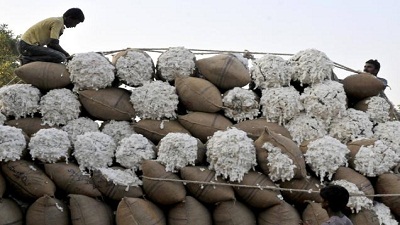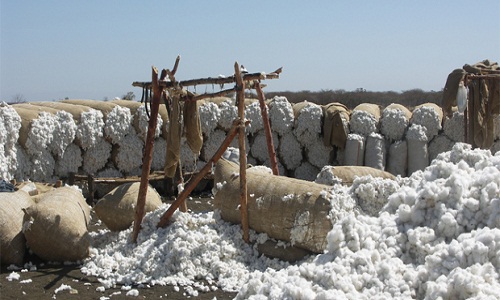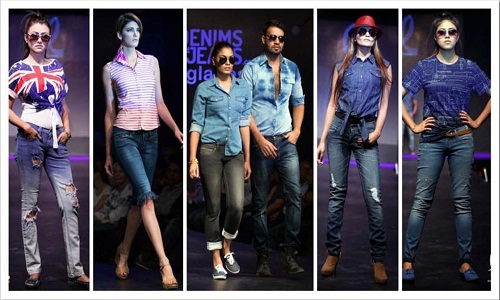FW
Esprit has reported a net loss for the six months ended in December compared with a profit a year earlier. Turnover too has also fallen. The clothing retailer has been hurt by a slowdown in China and a weak euro. Esprit has been in the midst of an ambitious revamp over the past year that has included store closures, price adjustments, new return policies, and technology and distribution improvements.
Looking ahead into the second half of financial year 2015-’16, the company remains confident of heading in the right direction and is laying the necessary foundation to restore competitiveness and long term growth. Turnover at Esprit’s largest market, Germany, grew 1.5 per cent year on year in local currency terms. Retail turnover grew 8.6 per cent, while wholesale turnover declined 9.6 per cent. Gross profit margin remained unchanged at 50.5 per cent. The weakness in the euro, if it persists, is expected to put some pressure on the group’s gross profit margin.
Esprit earns the bulk of its revenues in Europe. It feels the operating environment appears challenging amid volatile financial markets and economic uncertainty that might dampen consumer sentiment. Esprit is based in the US. It offers a large selection of high quality fashions for men, women and children as well as the latest fashion accessories and furnishings.
www.esprit.com/
Cambodia’s apparel and footwear exports in 2015 grew by 6.7 per cent. The country’s main client remains Europe, on the strength of the GSP tariff treatment. The US is the country’s second market. Export growth was investment-driven, with 78 new production facilities launched in the course of the year. Nevertheless, investment is expected to slowdown in 2016, with approval for 38 projects, as opposed to approval for 57 projects last year.
Cambodia’s textile and apparel industry generated more than seven lakh jobs in 1,200 workshops. The industry is the mainstay of Cambodia’s economy. This pushed the government to forestall potential strikes by passing a bill last autumn which bolstered trade union law. In October, trade unions and employer representatives settled on a minimum wage rise.
Cambodia’s garment sector contributes 80 per cent to the country’s total export revenue. Over the years, the industry has faced intense internal and external pressures, including the global economic crisis, increased competition, and a trend of young Cambodians choosing to work abroad over factory jobs.
To increase their share in global garment export market Cambodia’s factories must deepen their commitment to creating decent working conditions that give it competitive edge. Focusing on working conditions across the sector will be critical in helping the industry navigate new challenges and further leverage economic development.
Marcus Bruegel, Technical Director, Global Organic Textile Standard (GOTS) has quit and Rahul Bhajekar has been appointed his successor. Bhajekar will be responsible for further development and quality assurance of GOTS, including environmental and social aspects. He has more than 21 years of experience in textile testing and chemical restrictions, as well as in implementation of GOTS with manufacturers, processors and chemical companies. Rahul has been familiar with GOTS since 2005 and served as a member of the GOTS Technical Committee for several years.
Marcus was with GOTS from the start and has contributed tremendously to its growth and stature. His role in the successful establishment of GOTS as a globally recognised label has been exemplary. As the stringent voluntary global standard body, GOTS is recognized to ensure the organic status of textiles for the entire post-harvest processing (including spinning, knitting, weaving, dyeing and manufacturing) of apparel and home textiles made with organic fiber. Key provisions include a ban on the use of genetically modified organisms (GMOs), highly hazardous chemicals (such as azo dyes and formaldehyde), and child labour, while requiring strong social compliance management systems and strict waste water treatment practices.
Meanwhile the number of GOTS certified facilities have continued to increase. The number of facilities certified by GOTS grew from 3,663 facilities in 2014 to 3,814 facilities in 2015. GOTS certified facilities are now located in 68 countries around the world. India leads the countries with the largest increase in GOTS certification in 2015. India has 1,441 GOTS certified facilities, Turkey 489, Germany 306, Bangladesh 210, China 201, Pakistan 142, Italy 141 among others.
"Quality will be the most important factor apart from the rupee’s value for India’s exports as other countries like Australia, Uzbekistan and Turkey will also be selling to Vietnam, Pakistan and Bangladesh. Though Bangladesh, Pakistan and Vietnam have replaced China as India’s main cotton export destinations, volumes are picking up at a slow pace and are unlikely to match Chinese demand."

Demand for Indian cotton is likely to increase between four and five per cent in 2015-16 and around five-six per cent in 2016-17, as exports recover slowly. As exports to Vietnam, Pakistan and Bangladesh are expected to be higher than a year ago, the cotton sector is likely to revive moderately in the 2016-17 season (August-July). According to the cotton sector outlook released by India Ratings and Research (Ind-Ra), Vietnam is likely to increase its spindles capacity by 30 per cent in FY16-17.
Quality, the deciding factor for business

In this scenario, domestic production in Pakistan and Bangladesh will not be able to keep pace with the increasing demand for apparels in these two countries, providing opportunities to Indian exporters, the research agency said in the report. Quality will be the most important factor apart from the rupee’s value for India’s exports as other countries like Australia, Uzbekistan and Turkey will also be selling to Vietnam, Pakistan and Bangladesh. Though Bangladesh, Pakistan and Vietnam have replaced China as India’s main cotton export destinations, volumes are picking up at a slow pace and are unlikely to match Chinese demand. China was buying about 46 per cent of India’s total cotton exports until it changed its policy after 2013-14.
According to Ind-Ra, prices are likely to remain at the current level, between Rs 33,000 and Rs 36,000 per candy, with China reducing imports significantly and moderate demand from the Indian spinning industry. One candy is 3.56 quintal of lint cotton. It is the unit for sale of cotton in most Indian states. The continuation of direct subsidy-based policy by China and an unlikely jump in the domestic demand will keep Indian cotton prices under pressure, according to the report.
Operating margins will stay between one per cent and two per cent for ginners and traders, but the profit after tax margins may improve as the companies reduce stocks and focus on receivables management. International cotton prices, however, will remain sensitive to the release of cotton by China from its official reserves.
Managing the shortfalls amid increasing demand
Beijing has been able to limit imports to mostly meet shortfalls in production in relation to consumption, after the change in China’s cotton policy to support farmers by making cotton available to mills at market rates. Imports are likely to be even lower next year because China will consume the cotton it had stocked in the previous years.
India’s cotton acreage will reduce to 12 million hectare next year from 12.9 million hectare this year due to farmers shifting to other crops such as guar, soya bean, groundnut and pulses. These competing crops are currently giving better remuneration than cotton.
Demand for Indian cotton is likely to increase between four and five per cent in 2015-16 (August-July) and around five-six per cent in 2016-17, as exports recover slowly. Cotton yarn, exports are under severe pressure on account of China’s policy that has shored up local demand of cotton and made India’s cotton yarn export uncompetitive. But the Indian industry will provide some support driven by the enhanced domestic consumption of fabrics, apparels, and home textiles in view of lowering interest rates, rising discretionary income, favourable demographics and moderating inflation.
The report said, a mismatch between spinning and fabric sectors – yarn manufacturing expanded rapidly in the past few years, while fabric manufacturing base remained stagnant – has created a glut in the domestic market, making Indian players vulnerable to export demand.
The Ind-Ra report explained that stock levels with the public sector Cotton Corporation of India have estimated to increase to 8.6 million bales on March 31, 2015 from 0.4 million bales as on March 31, 2014. However, since then stocks have reduced substantially. (One bale weighs 170 kg.) Though the rating agency has put a negative outlook, it said if a substantial increase in India’s exports to China and other countries occur, it would result in stable outlook.
It also said a rebound in domestic mill consumption driven by a higher demand for Indian textiles at stable cotton prices above minimum support prices will lead to stable rating.
Wool brands are working for closer collaboration and joint product development with brands. Brands are increasingly combining different technologies and new applications of wool in their performance and outdoor wear products as the use of wool goes beyond the knitted.
Wool is used as wadding for jackets to replace downs or synthetic wadding. Companies already using wool are increasing use wool content in their collections. In addition, many companies who previously were not using wool are starting to do so.
Major brands are now making sure that they have at least some merino in their ranges. They have found innovative ways to integrate wool into their products. There are jackets with felted wool elements on the outside combined with fine next-to-skin knitted wool on the inside. Some synthetic jackets have wool elements worked into the design.
Wool is showing a positive trend in performance wear. One hundred per cent wool and blended fabrics will continue to show growth in this market sector. Woolmark’s innovations include a water and wind protection jacket made of a fabric that uses a specially treated wool fiber. The fabric is constructed through a unique fiber stretching and fabric compacting technology, resulting in a fabric that is wind and water resistant as well as sporting wool’s other natural benefits such as breathability and resilience.
www.woolmark.com/
Due to tough government regulations on foreign exchange hinder them from getting stocks into their stores and cash out of the country. Hence, South African retail clothing firms are under pressure. South Africa’s largest listed clothing retailer, Truworths International has closed its remaining two stores in Nigeria in response to the stringent regulations that have made it difficult for the South African retailer to operate in Africa’s biggest economy.
A recent survey shows that other clothing firms may go the path of Truworths and Woolworth, a Cape Town-based food and clothing retailer that dumped the Nigerian market in 2013 following high rental costs and complex supply chain processes, if the restrictions are not eased.
Foshino Group, another South African retail clothing firm, is not exempt from the storm sweeping softly through the South African clothing sector in Nigeria, as its sales have also dropped considerably. According to market analysts, with sustained strains on the importation of merchandise, foreign companies may soon begin to flirt with neighbouring sub-Saharan African countries that can boast of enabling environments for foreign investments to thrive, as they move to dump Nigeria.
Meanwhile, the Nigerian Investment Promotion Commission (NIPC) identified massive staff retrenchment and significant foreign investment capital flight from the economy as unavoidable effects of the withdrawal of Truworths from the Nigerian scene. However, the commission asserted that the restrictions inhibiting the clothing firms could serve as an opportunity for Nigeria to look inwards and revamp the textile and garment industry.
Delay or failure to implement the Trans-Pacific Partnership (TPP) trade deal could cost US exporters around $94bn, which also suggests global headwinds are likely to continue to weigh on US growth in the near future.
The 2016 'Economic Report of the President', written by the Council of Economic Advisers, and sent by President Obama to Congress this week, outlines the importance of the TPP for the US economy, which authors predict will grow by 2.7 per cent in 2016, 2.5 per cent in 2017, and 2.4 per cent in 2018.
The President’s report, however, warns of headwinds from a global slowdown that could put pressure on US exports. Opinion of both, the 2016 World Bank Global Economic Prospects and the IMF report that the GDP growth in low-income countries (LICs) fell to between 4.8 per cent and 5.1 per cent in 2015. Between one-half and two-thirds of LICs are commodity exporters. The commodity price decline is taking a toll on public finances, current account balances, and economic growth in these countries, making them more vulnerable to both domestic challenges and external shocks such as global financial turbulence.
This slower growth around the globe, however, has had spillovers to the US economy, the report explains.

The third FASHIONIM, a global fashion event dedicated to the denim industry, will for the first time showcase designs of fashion students from different colleges in Bangladesh. Only designs of those designers would be showcased who were finalists at the Bangladesh Fashion Student’s Contest. The event to be held on March 2, 2016, in Dhaka, is being organised on the sidelines of Denimandjeans.com Bangladesh show.

At the last FASHIONIM event held in October 2015, denim collections from three countries were exhibited. These were Vincunha Textile from Brazil, Envoy from Bangladesh and Bhaskar Denim from India. Around 400 guests from reputed retailers, factories, buying houses and brands were part of the event last time. For people connected with the denim industry in Bangladesh, it is of great interest to come for the show to get an update on the latest trends in the industry. The main theme driving the show was eco-sustainability.
Various market reports have said that Bangladesh would soon rule the international denim industry as the prime supplier and this optimistic fact has been motivating investors to invest in the industry in Bangladesh. The idea behind FASHIONIM has been to provide a platform to the denim industry where the entire supply chain players from mills, fibre, chemical suppliers, garment manufacturers, retailers, buying houses and brands could come together, thrash out ideas to help the industry grow.
Australian surf and ski clothing company Rip Curl has been universally condemned recently, because a survey found that ‘some clothing is manufactured under the cruel situations prevailing in North Korean production.’ The popular brand launched in 2015, the winter ski suit, although the label is 'Made in China', but it is in fact a North Korean 'condition as slaves' factory product.
The differential treatment towards North Korean workers had notoriously low pay and long working hours are well known world-wide. For some time now, terms such as 'slaves', 'slave labour' and similar names are associated with Rip Curl, in the media.
On the contrary, Rip Curl argued that it is not their mistake and passed it on to the contractor engaged with them for sourcing. The brand was originally popular but it suffered a public relations crisis. Meanwhile, anti-poverty organization Oxfam Australia considers that the company must take responsibility.
Oxfam Australia's head of Sauk (Helen Szoke) said in a statement that companies must assume as it is their responsibility to ensure human rights issues are protected in their businesses. This is not just a moral issue, but also the United Nations guidelines for commercial requirements, he added.
Germany sees Bangladesh as a reliable source of high quality garments. The country will support Bangladesh in its aim to double its apparel exports and to develop a sustainable, compliant, social and profitable garment sector. Germany is the second largest single export destination for Bangladesh’s garment products after the US.
Bangladesh is a priority partner for Germany. In fact, Germany was one of Bangladesh’s first partner countries after it gained its independence. Germany is working with political, civil society and private sector stakeholders to develop strategies to promote compliance with social and environmental standards in garment factories and achieve sustainable improvements in working conditions for garment industry workers.
Projects have focused on improving social and environmental standards and health and safety in garment factories, and on the promotion of small and medium-sized enterprises.
Meanwhile, Germany has urged foreign buyers to increase prices of apparel products to ensure the welfare of garment workers. The country has provided training and expertise to Bangladeshi garment workers and its initiatives in the readymade garment sector have helped in improving the safety standards and workers’ rights in Bangladesh.
Germany is the main hub of 27 countries in Europe that is helping develop the clothing business of Bangladeshi producers and exporters.












